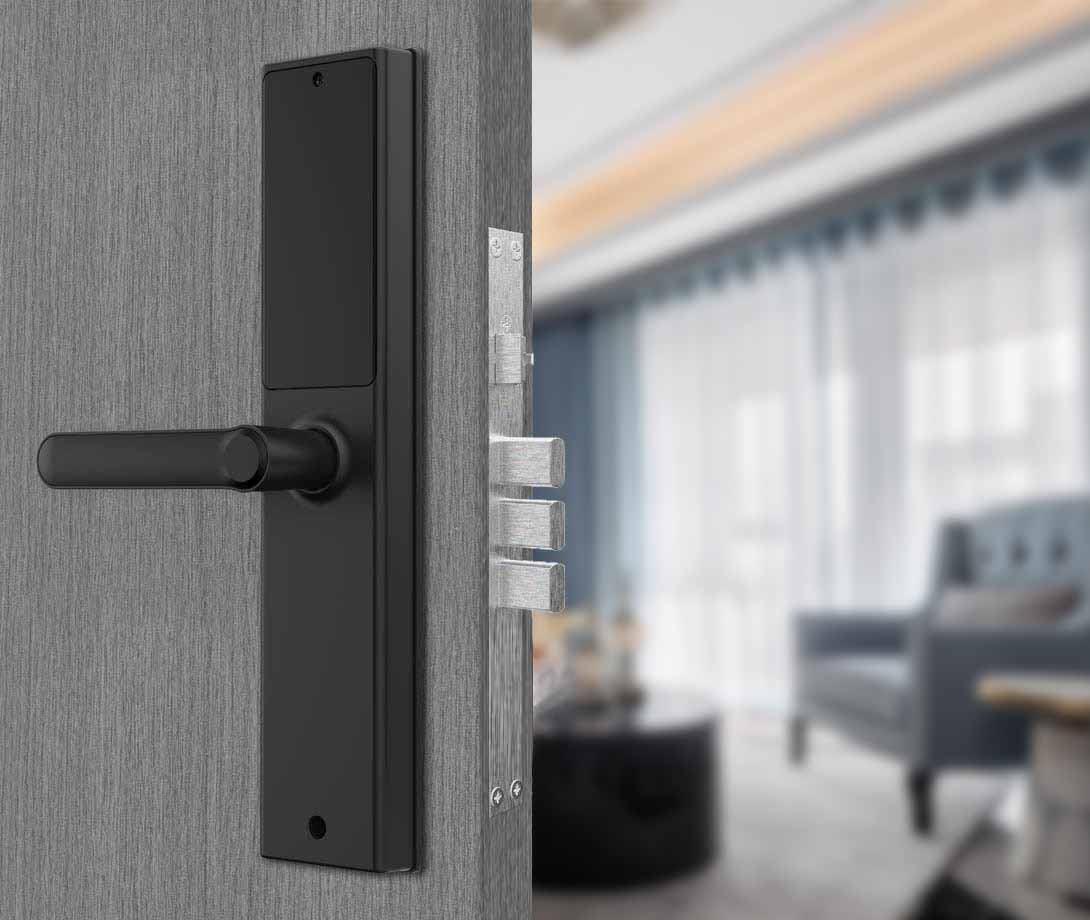Are Smart Locks Easier to Break Into?
Smart locks are becoming a common feature in American homes, offering keyless entry, remote access, and seamless integration with smart home systems. But as these high-tech locks gain popularity, a critical question arises: Are smart locks easier to break into than traditional deadbolts?
Some people worry that hackers, tech-savvy burglars, or even simple malfunctions could make smart locks less secure. Others argue that advanced encryption and tamper-proof designs actually make them safer than old-fashioned keys.
This article examines the real security risks of smart locks, comparing them to traditional locks and providing expert tips to keep your home safe.
How Do Burglars Break Into Homes?
Before analyzing smart locks, it’s important to understand how most break-ins happen. According to the FBI and home security studies:
- 34% of burglars enter through the front door (often by forcing or picking locks)
- 22% use unlocked doors or windows (opportunistic crimes)
- Only 2% involve high-tech hacking (most thieves prefer easy targets)
This means that physical security flaws (weak deadbolts, poorly installed locks) are still the biggest vulnerability—not necessarily digital hacking.
Are Smart Locks Easier to Break Into? The Truth
1. Can Smart Locks Be Hacked?
Yes—but it’s not as easy as movies suggest. Most smart locks use AES-128 or AES-256 encryption, the same standard used by banks and the military. However, vulnerabilities can exist if:
- Weak passwords are used (e.g., “1234″ or “password”)
- The lock’s firmware is outdated (manufacturers release patches for security flaws)
- Bluetooth/Wi-Fi signals are intercepted (rare, but possible with specialized tools)
How to prevent hacking?
Use strong, unique passwords
Enable two-factor authentication (2FA)
Regularly update firmware
Choose brands with strong encryption
2. Can Smart Locks Be Physically Bypassed?
Some smart locks have mechanical key backups, which can be picked just like traditional locks. Others are keyless, meaning burglars would need to:
- Brute-force the keypad (rare, since most locks lock after too many wrong attempts)
- Use a magnet to manipulate the lock (some cheap models are vulnerable)
- Remove the entire lock with tools (requires time and noise—deterrents for thieves)
High-end smart locks are often more pick-resistant than standard deadbolts.
3. Do Power Outages Make Smart Locks Unsafe?
Most smart locks run on batteries (6-12 month life) and still function if Wi-Fi goes down. However:
- If batteries die without warning, you could be locked out (unless there’s a backup keyhole or external power option).
- Some locks send low-battery alerts to prevent this.
4. Can Thieves Exploit Remote Access?
If a hacker gains access to your smartphone or Wi-Fi network, they could theoretically unlock your door remotely. However:
- Most break-ins are opportunistic—thieves rarely use advanced hacking.
- Activity logs (showing who unlocked the door and when) make smart locks more traceable than traditional locks.
Smart Locks vs. Traditional Locks: Which Is More Secure?
| Security Factor | Smart Locks | Traditional Locks |
|---|---|---|
| Lock Picking | Hard (if no key backup) | Easy (with lock-picking tools) |
| Bumping/Drilling | Some resist drilling | Vulnerable to bump keys |
| Lost Keys | No keys = no duplicates floating around | Keys can be copied or stolen |
| Remote Unlocking Risk | Possible (if hacked) | Not applicable |
| Tamper Alerts | Yes (app notifications) | No |
| Forced Entry | Similar resistance to deadbolts | Depends on lock grade |
Winner? Smart locks can be more secure if properly maintained, but traditional locks are still reliable if high-quality.
How to Make Your Smart Lock as Secure as Possible
1. Choose a Reputable Brand
Avoid cheap, no-name smart locks.
2. Disable Key Overrides (If Possible)
Some smart locks have physical key backups, which can be picked. If security is a priority, opt for a fully keyless model.
3. Use Strong Authentication
- Never reuse passwords
- Enable 2FA (if available)
- Use fingerprint or facial recognition (for biometric locks)
4. Keep Firmware Updated
Manufacturers release patches for vulnerabilities—always install updates.
5. Pair with a Security System
Smart locks work best when combined with:
- Security cameras
- Motion sensors
- Alarm systems
Final Verdict: Are Smart Locks Less Secure?
No—if you choose a high-quality model and follow security best practices. While no lock is 100% burglar-proof, smart locks offer unique advantages:
- No physical keys to lose or duplicate
- Tamper alerts and access logs
- Integration with home security systems
However, cheap or poorly maintained smart locks can be hacked or bypassed. If you invest in a well-reviewed lock from a trusted brand, your home could actually be more secure than with a traditional deadbolt.
Bottom Line:
Smart locks are not inherently easier to break into—but like any technology, they require proper setup and maintenance to stay secure. For most Americans, the convenience and added security features make them a smart upgrade.
Post time: May-10-2025


